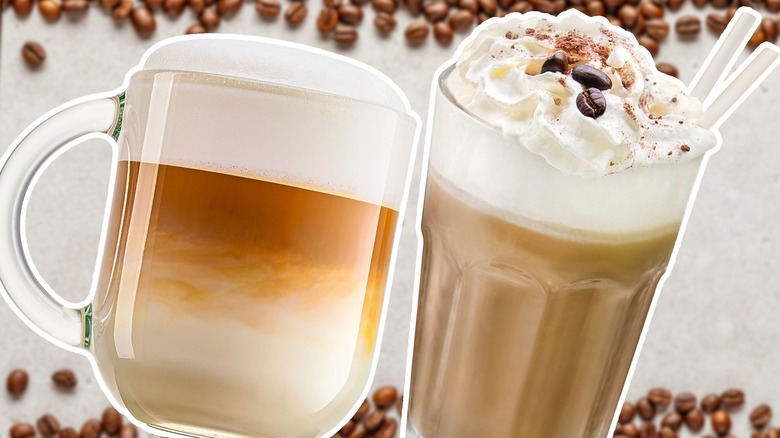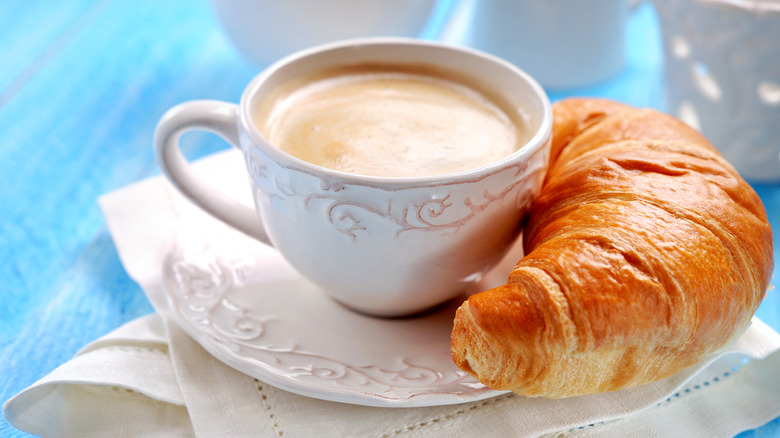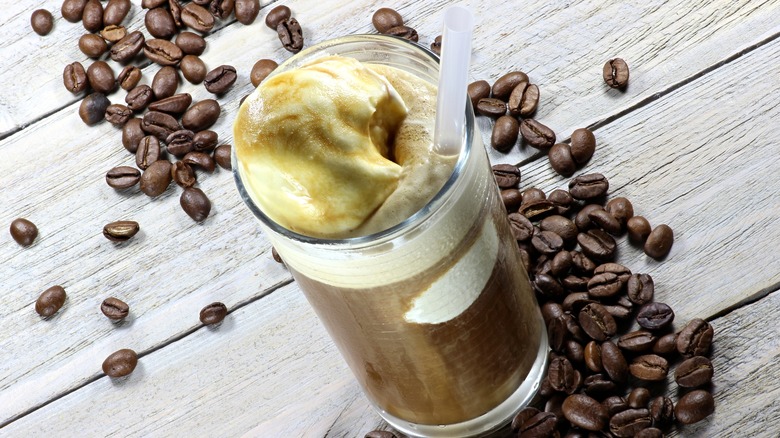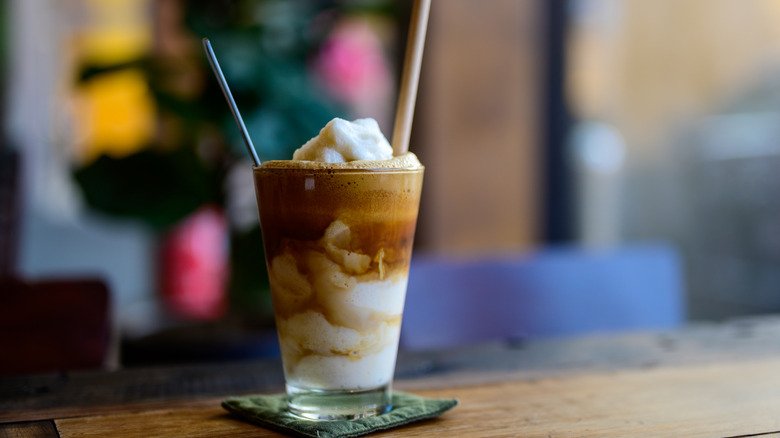Milchkaffee Vs Eiskaffee: What's The Difference Between These German Coffee Drinks?
Some coffee styles are enjoyed around the world — you can probably find cappuccinos and filter coffees practically anywhere. Since coffee is one of the world's most popular beverages, though, it's unsurprising that there are also myriad regional preparations. From Vietnam's egg coffee to Mexico's intricately brewed and spiced café de olla, there are many renditions to uncover.
In Germany, coffee culture runs deep, with the country's first cafe opening back in 1679. In addition to a morning pick-me-up, coffee in Germany is traditionally part of an afternoon ritual called kaffee und kuchen, which pairs the drink with cake. As a result, many Germany-specific coffee renditions take on a dessert-like form. One example is Pharisaeer Kaffee, the coffee drink with a boozy twist of whipped cream and rum.
For something even sweeter, don't pass up the eiskaffee, made with ice cream, whipped cream, and a malleable assortment of toppings. Despite its milkshake-like semblance, it shouldn't be confused with a milchkaffee; this drink isn't a milkshake either but is rather Germany's answer to a café au lait. Especially if you don't speak the language, differentiating such nomenclature can be tricky, so if you want to be able to order at German cafes with ease, you'll need to explore the distinctions.
What is a milchkaffee?
The milchkaffee is one of Germany's most popular coffee beverages. It's found on the menus of most German cafes, restaurants, and bakeries, similar to the ubiquity of lattes in the U.S. The drink's composition is straightforward — it consists of equal parts coffee and steamed milk, making it comparable to a café au lait. In fact, both of these drinks' names translate to "milk coffee" from their respective languages.
The coffee used in milchkaffees varies. Some versions utilize a strong, bold bean brewed in Germany's beloved filterkaffee (coffee filter) or a French press. Others employ espresso for a stronger interpretation. There are likely many renditions that utilize café crème, a hugely popular coffee made with an espresso-like extraction and four times the standard amount of water.
The milk is heated to a temperature just below boiling. This maneuver, often performed on a stovetop, doesn't create much microfoam, which is why you won't see latte art on this drink. The milk is then poured onto the coffee using a one-to-one ratio, and just like that, the milchkaffee emerges. Depending on your preference, you can either sweeten the drink or sprinkle some cocoa powder on top, though most enjoy the beverage as it comes.
What is an eiskaffee?
The eisakaffee combines coffee and ice cream to craft the perfect refreshment for a hot day. Its assembly is loose and contains slight variations depending on the maker. At its most fundamental, an eiskaffee combines chilled coffee, ice cream, and some sort of sweetener, and it's all topped with whipped cream. The ice cream flavor is dependably vanilla; its aromatic palate delectably fuses into the drink.
As opposed to those in an affogato recipe, all eisakaffee components are kept chilled, which yields a drink similar to a caffeinating milkshake. Additionally, an eisakaffee typically doesn't include espresso but rather a robust brewed coffee prepared in a filter or French press. Most chill the carafe in the fridge for several hours for easy batching of several rounds.
The drink can be served in either an average-sized coffee cup or a tall glass. Assembly begins with two scoops of ice cream that are placed in the bottom of the vessel, followed by the cold joe. Some sweeten the coffee prior to pouring, while others keep it black. For the foamiest texture, many use the best method for whipping cream, which means whisking it manually. Last but not least is the wide range of toppings, which allow each person's creativity to shine.
An eiskaffee involves more components than the straightforward milchkaffee
In Germany, the milchkaffee is a widely consumed beverage that takes on a dependable form. Much like ordering other coffee drinks such as cappuccinos, lattes, and americanos, ordering a classic German milchkaffee will give you a relatively standardized experience. There may be some deviations in the coffee beans and brewing method employed, but with only two components, this drink takes on the role of an everyday pick-me-up.
Conversely, if you order eisakaffes from two different businesses, you'll likely get two different drinks. The eisakaffe's dessert-like form is meant to be relished at a sidewalk cafe, which opens up a few fun deviations. Some change up the ice cream flavor, swapping out the classic vanilla for chocolate or coffee. The foamed element can also be changed to coconut cream, the ideal vegan whipped topping.
Further possibilities come in the form of toppings. Everything from chocolate sprinkles to waffle cookies to cocoa nibs to rolled wafers all have a place atop this easy-to-love cold coffee creation.



